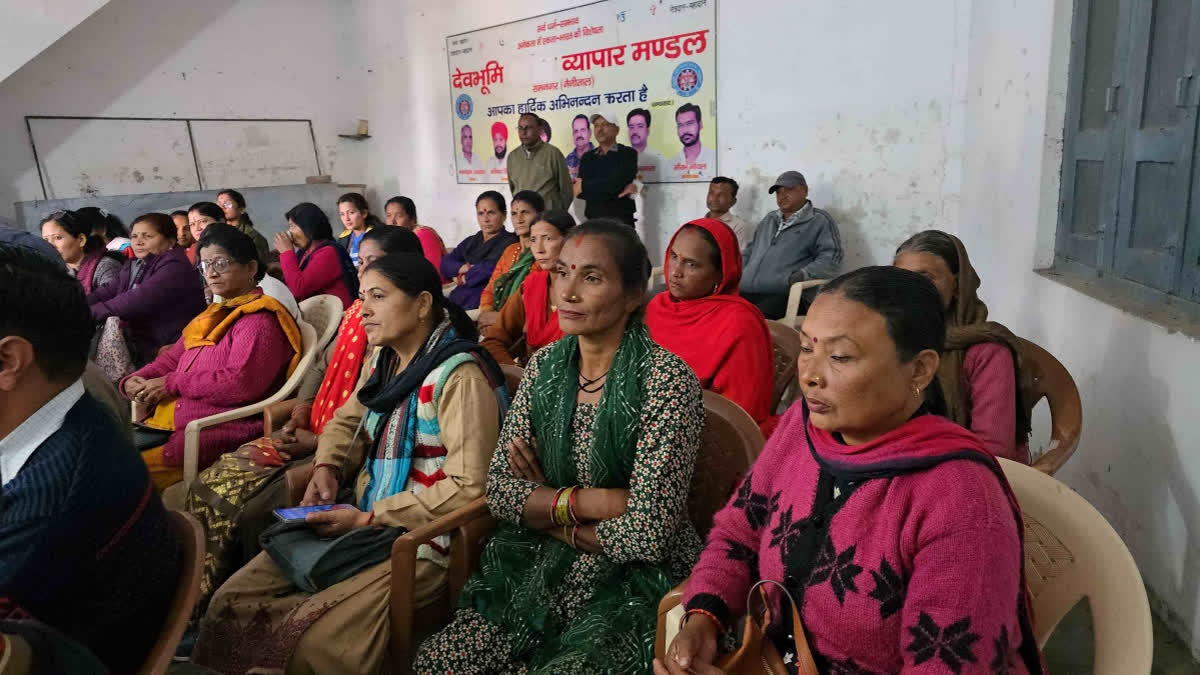Ramnagar, Uttarakhand: The wilderness of Corbett Tiger Reserve may be testaments to tales of majestic tigers and thriving biodiversity, but for the women living around its periphery, these greens echo concerns about privacy and freedom. Their lives, long intertwined with the forest, are under constant vigil of unrelenting gaze. Surveillance cameras, once meant only for tigers, now seem to watch them too!
Trishant Simlai, a researcher from University of Cambridge who conducted a gargantuan study on the easy gaze of technology on women, sheds light on the unintended consequence of conservation - the curtailment of women’s independence due to surveillance technologies like camera traps and drones.
Simlai’s research, conducted over 14 months in 21 villages near Corbett, reveals how the presence of camera traps—originally installed to monitor wildlife—is creating a climate of discomfort and restriction for women. At an event organized by the Mahila Ekta Manch in Ramnagar, he shared the experiences of forest-dependent women who now shy away from everyday activities such as gathering firewood, foraging, or even relieving themselves in the open.
I’ve always been interested in understanding the intersection of technology, conservation, and society. The use of camera traps and drones in forests like Corbett Tiger Reserve has undeniably advanced wildlife monitoring. But I wanted to explore their social implications, especially for marginalized communities like women. Over 14 months, I spoke to villagers, women, and forest officials to understand these dynamics, says Simlai.
“Unlike urban areas, where surveillance cameras are accompanied by warnings, rural spaces lack such awareness mechanisms,” Simlai explains. “Women are often unaware of where these cameras are installed. This has made them feel observed and hesitant to move freely, especially in forested areas they’ve relied on for generations.”
The study highlights a particularly alarming incident from 2017, where a photo of a woman defecating in the forest was shared within a local group. Such violations, Simlai says, stem from the lack of secure data management. Camera traps use memory cards to store footage, which can be easily accessed and misused if not properly safeguarded.
“For these women, the forest is more than just a resource—it’s a part of their identity,” Simlai says. “When surveillance creates fear or restricts their movements, it’s not just their privacy that’s at stake but their autonomy and way of life.” Simlai’s research captures their apprehension: the worry of being watched, the fear of unintentional exposure, and the subtle erosion of their independence.
“I spoke to several women who told me they avoid going to the forest altogether,” he said. “This is a space they’ve always seen as theirs, but now they feel alienated.”
While the forest department insists that camera traps are primarily for wildlife monitoring, Simlai emphasizes the need for more transparency and safeguards. “These technologies are essential for conservation, but their implementation must be sensitive to human concerns,” he added.
Simlai’s study also criticizes the lack of accountability when it comes to handling data from these surveillance devices. He suggests that strict policies be introduced to secure footage and prevent misuse. “It’s a question of trust,” he said. “Local communities need to feel that these tools are being used responsibly and ethically.”
Despite his intention to shed light on these unintended consequences, Simlai’s work has faced backlash. Some media reports misinterpreted his findings, accusing him of tarnishing the image of Corbett Tiger Reserve. "I obtained permissions from the forest department for my research, and my findings are based on facts. However, the media misreported some aspects of my study, leading to confusion. My research is not meant to tarnish Corbett’s image but to encourage a dialogue on improving surveillance practices and ensuring they don’t harm local communities," he clarifies.
The findings, however, have opened a crucial conversation about balancing conservation with human rights. “We must remember that the forests aren’t just home to wildlife—they’re also the lifeline of communities that have coexisted with nature for centuries,” Simlai said, adding, "They told me that they no longer feel the same connection to the forest. It’s heartbreaking to see how this relationship is being altered.”
His study titled, 'The gendered forest: Digital surveillance technologies for conservation and gender-environment relationships', was published as "online first" in Environment and Planning F.
His report revealed "how forest rangers in the national park deliberately fly drones over local women to frighten them out of the forest", and stop them collecting natural resources despite it being their legal right to do so. "I hope my study encourages more inclusive conservation practices that consider the social impacts of technology. By addressing privacy concerns, we can ensure that these tools benefit both wildlife and local communities," he signs off.
For the women living around Corbett, the call for change is urgent. They hope for a future where conservation does not come at the cost of their dignity and freedom. The forest has always been a place of life, growth, and harmony. It should remain so for everyone—human and animal alike.
Read More



